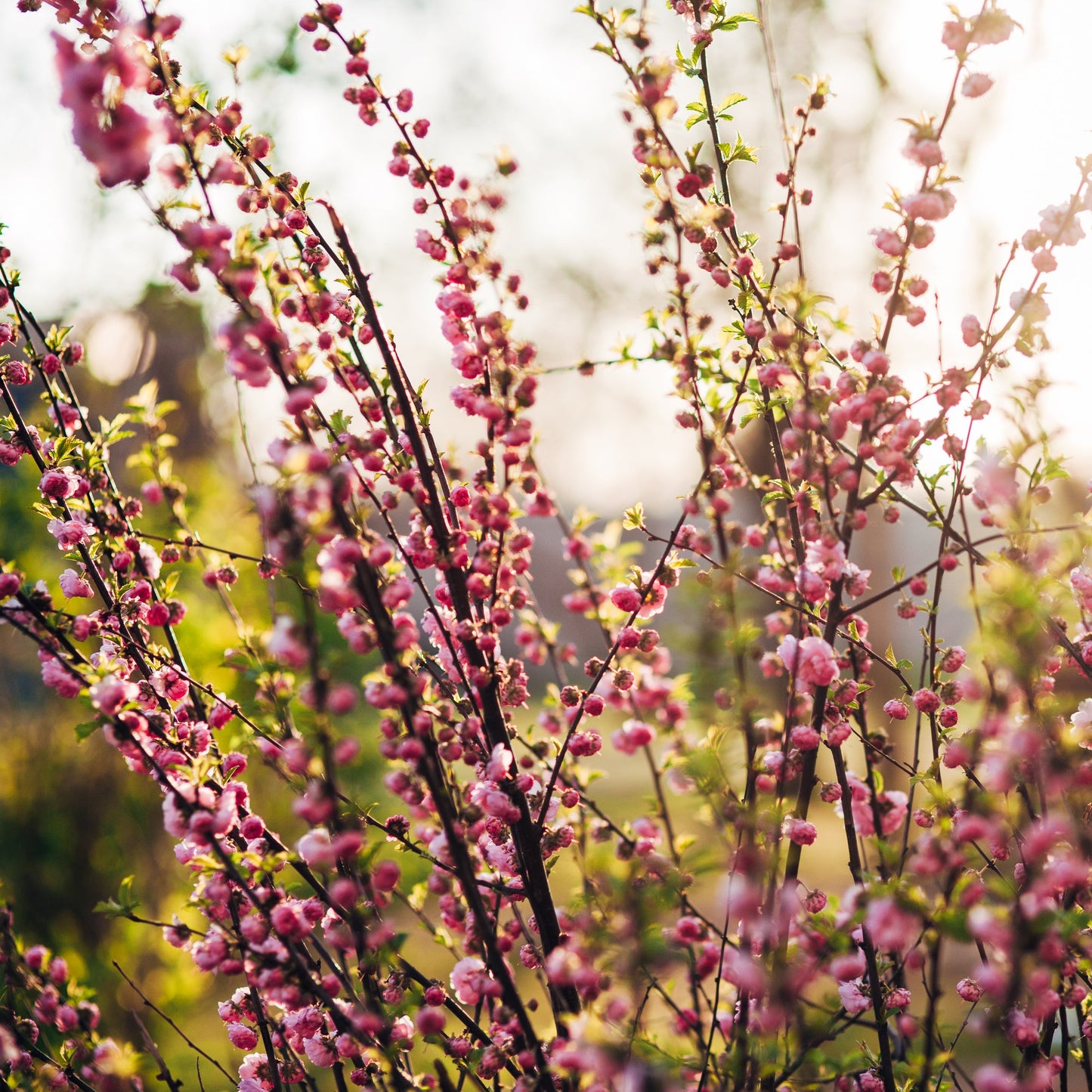Flowering Almond
The Flowering Almond is a compact ornamental shrub celebrated for its breathtaking early spring blooms. Covered in dense clusters of soft pink or white double flowers, it’s one of the first shrubs to flower each year—offering a striking preview of spring before most plants have even leafed out.
Perfect for foundation plantings, borders, and cottage gardens, this petite showstopper adds cheerful color and charm to any landscape.
Flowering Almond Overview
| Attribute | Details |
|---|---|
| 🌿 Botanical Name | Prunus glandulosa |
| 🏷️ Common Names | Flowering Almond, Dwarf Flowering Almond |
| 🌳 Mature Height | 4–5 feet |
| 🌐 Mature Width | 3–4 feet |
| 📈 Growth Rate | Moderate (12–24 inches per year) |
| ⏳ Lifespan | 10–15 years (can be rejuvenated with pruning) |
| 🧊 USDA Zones | 4–8 |
| ❄️ Chill Hours | 700–1,000 hours |
| ☀️ Sun Preference | Full sun to light shade |
| 🧱 Soil Type | Well-drained loam, clay, or sandy soil |
| ⚖️ Soil pH | Slightly acidic to neutral (6.0–7.0) |
| 💧 Water Needs | Moderate; drought-tolerant once established |
| 🌸 Flower Color | Double pink or white blooms in early spring |
| 🍒 Fruit Type | Inconspicuous; not grown for fruit |
| 🐝 Pollinators | Attracts early bees and beneficial insects |
| 🌿 Growth Habit | Rounded, upright, multi-stemmed shrub |
| ↔️ Spacing | 3–5 ft apart for massing or low hedge |
| 🏡 Landscape Uses | Foundation plantings, borders, specimen shrub |
| 🧹 Maintenance Level | Low to moderate |
Environmental Benefits
🌸 Provides one of the earliest nectar sources for bees
🐝 Supports spring pollinators with dense flower clusters
🌿 Adds habitat structure for small garden insects and birds
🧱 Helps prevent erosion on small slopes or garden edges
Pros & Cons
| ✅ Pros | ⚠️ Cons |
|---|---|
| 🌸 Spectacular double blooms in early spring | 🍒 Not grown for fruit; purely ornamental |
| 🐝 Excellent early-season pollinator support | 🧬 Shorter lifespan than many woody shrubs |
| 🌿 Compact size fits small gardens and tight spaces | ✂️ May require rejuvenation pruning every few years |
| 🏡 Ideal for borders, foundations, and cut flower gardens | 🐛 Can attract aphids or scale insects |
| 💧 Drought-tolerant once established | 🌱 Not native; less wildlife value than natives |
Planting & Care Guide
🛁 Soak roots thoroughly before planting
🕳️ Dig a hole twice as wide as the root ball; plant at crown level
🌾 Mulch with 2–3 inches to conserve moisture and block weeds
💦 Water deeply during dry spells, especially in first season
✂️ Prune immediately after flowering to maintain shape
🧪 Apply compost or slow-release fertilizer in early spring
The Flowering Almond is a springtime gem that wakes up the garden with dazzling color and charm. Whether flanking an entryway, filling out a perennial border, or standing solo in bloom, this shrub proves that good things really do come in small, flowering packages.




